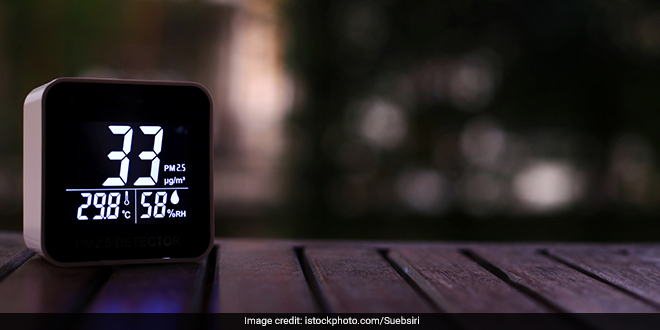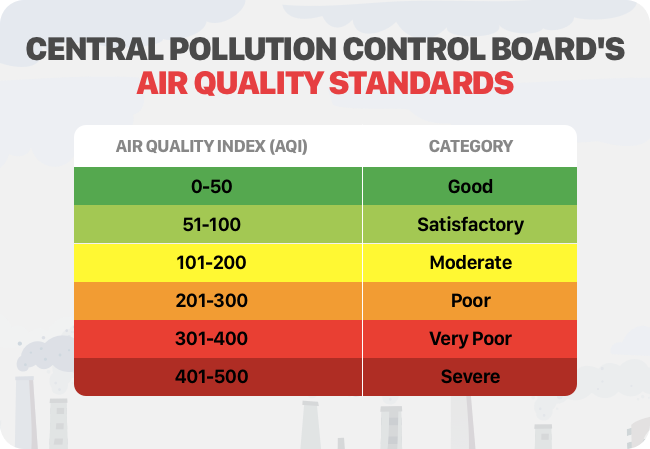New Delhi: Earlier in November, the state of air quality in India, the second most populous country in the world, was such that Rekha Barnwal, a housewife, banned her two children from playing outdoors. Even today, when the air quality index (AQI) in Delhi stands at 240 (according to CPCB), under the poor category, Rekha avoids sending her children out, especially without an air pollution mask. To understand what air quality index is, how it is measured, its different levels and how dangerous the deteriorating air quality index is, NDTV spoke to the experts.
What is Air Quality Index?
AQI is the air quality index; it gives you the index value that what is the current pollution status in the city, how polluted the air currently is. Different levels of AQI symbolises different things like on prolonged exposure to ‘poor’ AQI, individuals might witness breathing problem, says Shambhavi Shukla, Senior Research Associate at Centre for Science and Environment.
Also Read: How Air Pollution Impacts Pregnant Women And Foetus
How Is AQI Measured?
Eight pollutants namely particulate matter (PM) 10, PM2.5, Ozone (O3), Sulphur dioxide (SO2), nitrogen dioxide (NO2), carbon monoxide (CO), lead (Pb) and ammonia (NH3) act as major parameters in deriving the AQI of an area. Short-term (upto 24-hours and 8-hours for CO and O3) National Ambient Air Quality Standards are prescribed for these pollutants.
Also Read: Air Pollution: What Is Particulate Matter And How Does It Affect The Human Body
There are eight pollutants whose concentration is measured and then based on the ambient concentrations, corresponding standards and likely health impact, a sub-index is calculated for each of these pollutants. The worst sub-index determines the overall AQI for the city and the pollutant whose sub-index is the worst becomes the prominent pollutant, explains Ms Shukla.
As per CPCB’s (Central Pollution Control Board) air quality standards, AQI is categorised into six parts. AQI between 0-50 is considered ‘good’, 51-100 ‘satisfactory’, 101-200 ‘moderate’, 201-300 ‘poor’, 301-400 ‘very poor’, and between 401-500 ‘severe’.
All the eight pollutants may not be monitored at all the locations. Overall AQI is calculated only if data is available for a minimum three pollutants out of which one should necessarily be either PM2.5 or PM10. Similarly, a minimum of 16 hours of data is considered necessary for calculating sub-index, says Anumita Roy Chowdhury, CSE.
As the AQI value increases, health impacts become serious. For instance, while under satisfactory AQI, sensitive people might witness minor breathing discomfort, severe AQI may cause respiratory impact even on healthy people, and serious health issue in people with existing respiratory issues.
Also Read: How Effective Are Masks To Take On Air Pollution?
How Do Different Pollutants Affect The Human Body?
PM10 gets filtered at the top of your respiratory system that is nose. PM2.5 is the hazardous of the lot. 70-80 per cent of the health issues are caused by PM2.5 only as it crosses body’s natural barriers, and enter the lungs. Ozone is the second most dangerous parameter as it aggravate lung diseases such as asthma, emphysema, and chronic bronchitis, IIT Kanpur Scientist and Professor, Sachchida Nand Tripathi.
Other gases too lead to cardiovascular diseases like heart attack and pulmonary diseases such as asthma. The problem is, air pollution masks and purifiers currently we have, do not protect you from gases. The only way to evade from these gases is to control their sources.
Also Read: Five Easy Ways To Protect Yourself From Air Pollution































Atul Arora
October 19, 2020 at 4:46 am
While moving around in the country side I see many fires burning Parali and rubbish, how can I report it online. Any app what’s app number or email address?
tanzila
August 10, 2021 at 6:09 pm
is the AQI SCALE range is yearly ?